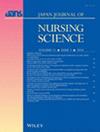Patient-reported motor chemotherapy-induced peripheral neuropathy impacts function in advanced colorectal cancer survivors receiving chemotherapy: A cross-sectional study
Abstract
Aims
Chemotherapy-induced peripheral neuropathy limits cancer survivors' compliance with chemotherapy and impaired function. This study aimed to examine separate impacts of clinician-assessed, patient-reported sensory and motor chemotherapy-induced peripheral neuropathy on physical/role function and functional interference in advanced colorectal cancer survivors receiving chemotherapy.
Methods
A cross-sectional, correlational design utilizing convenience sampling enrolled 75 stage III or IV colorectal cancer adults undergoing chemotherapy. Participants filled out the Patient Neurotoxicity Questionnaire, Identification Pain Questionnaire, and Peripheral Neuropathy Scale. Then, a trained research nurse conducted a brief neurological assessment using the Total Neuropathy Scale - clinical version.
Results
The prevalence of sensory and motor chemotherapy-induced peripheral neuropathy was from 34.7% to 54.7% and from 16.0% to 17.3%, respectively. Further, 20% of participants suffered from neuropathic pain. A low correlation between clinician-assessed and patient-reported chemotherapy-induced peripheral neuropathy was detected. The function was significantly impacted by patient-reported motor chemotherapy-induced peripheral neuropathy.
Conclusions
This study was superior in utilizing the brief and valid patient-reported and clinician-assessed tools to measure sensory and motor chemotherapy-induced peripheral neuropathy. Moreover, the identification of patient-reported motor symptoms has the largest influence on function in advanced colorectal cancer survivors. Nurses may use the brief and easily administered tools in clinical settings for effective screening and early detection of motor and sensory chemotherapy-induced peripheral neuropathy to prevent functional decline in advanced colorectal cancer survivors. However, this study was still limited because of the cross-sectional design, small sample size, sample heterogeneity, and recruiting participants from only one medical center.

 求助内容:
求助内容: 应助结果提醒方式:
应助结果提醒方式:


